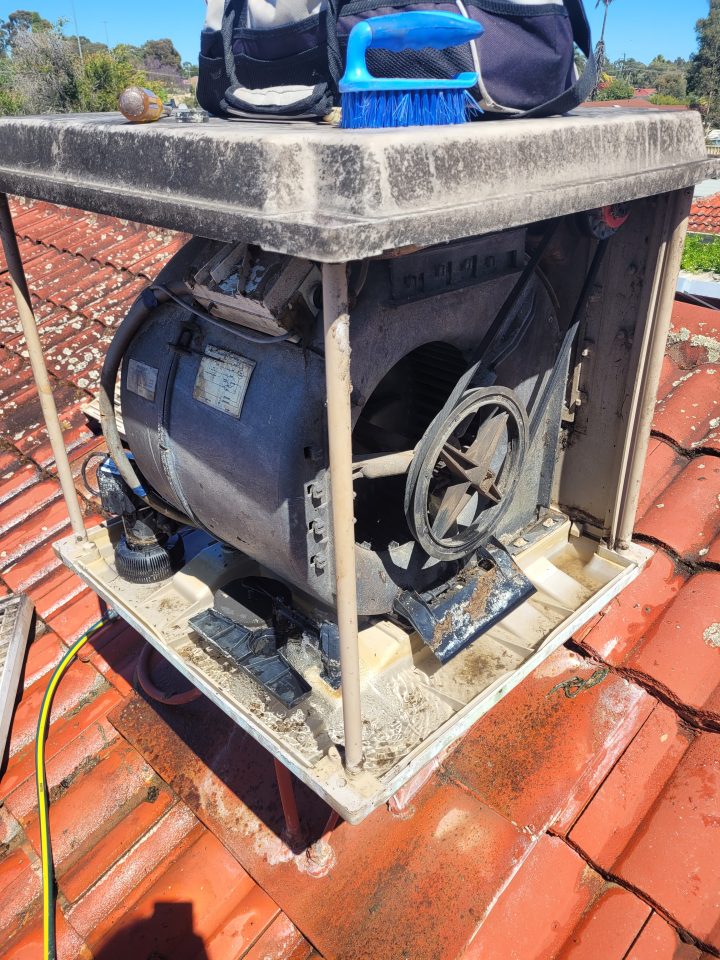Evaporative air conditioning, also known as “swamp cooling” or “evaporative AC,” is a type of cooling system that uses the natural process of evaporation to cool the air. This type of air conditioning is particularly well-suited for dry, hot climates where the humidity is low, as the evaporation process is most effective in these conditions.
How Evaporative AC Works
The key to the operation of evaporative AC is the use of water and air flow. Water is introduced into the system and is allowed to evaporate into the air. As the water evaporates, it absorbs heat from its surroundings, lowering the temperature of the air. A fan is used to blow the cooled air into the space that needs to be cooled.
The water is usually stored in a tank or reservoir and is pumped through a series of pads or filters that are exposed to the air. These pads or filters are often made of a porous, absorbent material such as cellulose or fiberglass. As the air passes through the wet pads, it cools down as the water evaporates. The cooled air is then circulated throughout the space by the fan.
The evaporative airconditioning process works best when the air is dry and hot, as the evaporation process is most efficient in these conditions. In humid environments, the water will not evaporate as easily, which will reduce the effectiveness of the system.
In order for an evaporative air conditioning (AC) unit to work effectively, it is important to have good airflow through the space that is being cooled. This means that you may need to keep a window or door open in order to allow fresh air to enter the space and circulate through the AC unit.
The amount of airflow needed will depend on the size of the space and the size of the AC unit. In general, it is a good idea to keep at least one window or door open to allow for proper airflow. This will help to ensure that the AC unit is able to cool the air effectively and efficiently.
Advantages of Evaporative Air Conditioning
One of the main advantages of evaporative AC is that it is relatively inexpensive to operate, as it uses a natural process and does not require the use of refrigerants or other chemicals. These refrigerants, which are used in traditional air conditioning systems, can be harmful to the environment if they are not disposed of properly. In addition, evaporative AC systems use less energy than traditional air conditioning systems, which makes them more environmentally friendly and cost-effective to operate.
Evaporative Aircon systems are also relatively simple and inexpensive to install. They do not require the use of complex machinery or specialized skills, which makes them a good option for homeowners or small business owners who are looking for an affordable and effective way to cool their space.
Limitations of Evaporative Aircon
While evaporative AC is a cost-effective and environmentally friendly option, it is not as effective Evaporative Aat cooling as traditional refrigeration-based air conditioning systems. This is because it relies on the natural process of evaporation, which is not as efficient at removing heat as the mechanical refrigeration process used in traditional air conditioning systems. As a result, evaporative AC systems are not suitable for use in extremely hot or humid environments, as they will not be able to effectively lower the temperature of the air.
In addition, evaporative AC systems require a constant source of water in order to operate effectively. If the water tank runs out of water or the pads become too dry, the system will not be able to cool the air effectively. This can be a problem in areas with drought conditions or water restrictions.
Maintenance and Care of Evaporative AC Systems
To ensure that an evaporative AC system is operating at peak efficiency, it is important to perform regular maintenance and upkeep. This may include cleaning the pads or filters, checking the water levels in the tank, and ensuring that all of the components are in good working order. It is also important to use a water treatment solution, such as a biocide, to prevent the growth of bacteria or algae in the water tank. These organisms can clog the system and reduce its efficiency.
In conclusion, evaporative AC is a cost-effective and environmentally friendly option for cooling spaces in dry, hot climates. While it is not as effective at cooling as traditional refrigeration-based systems, it is simple to install and operate, and does not require the use of harmful refrigerants. Proper maintenance and care will help to ensure that an evaporative AC system operates at peak efficiency.

